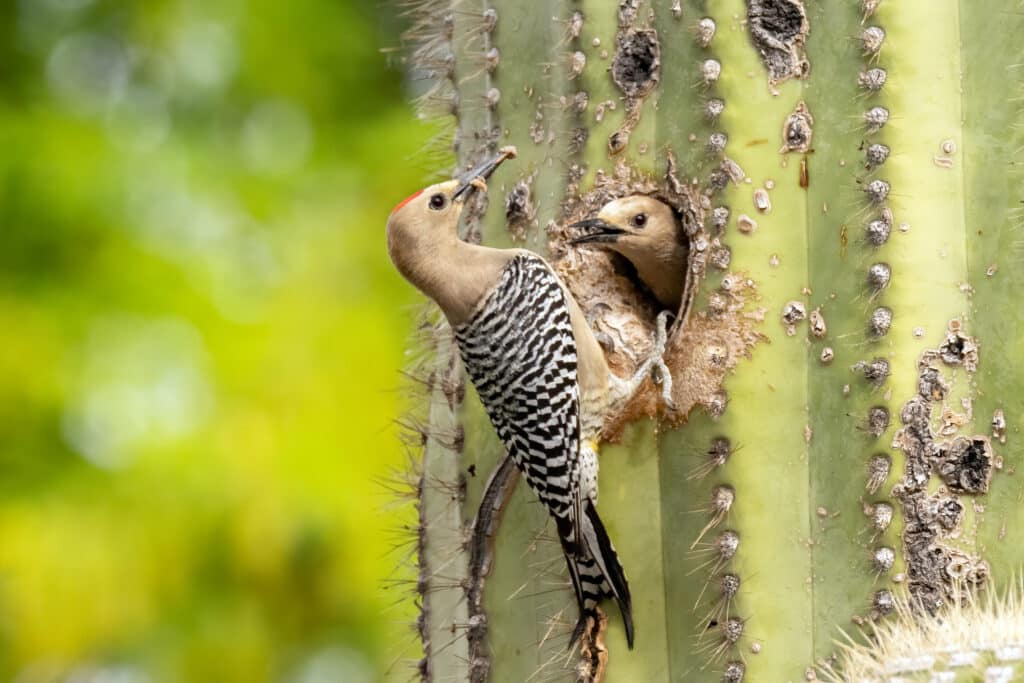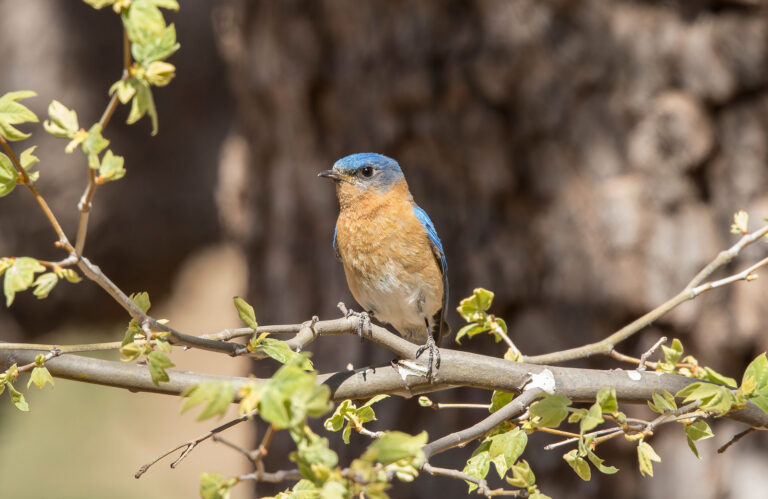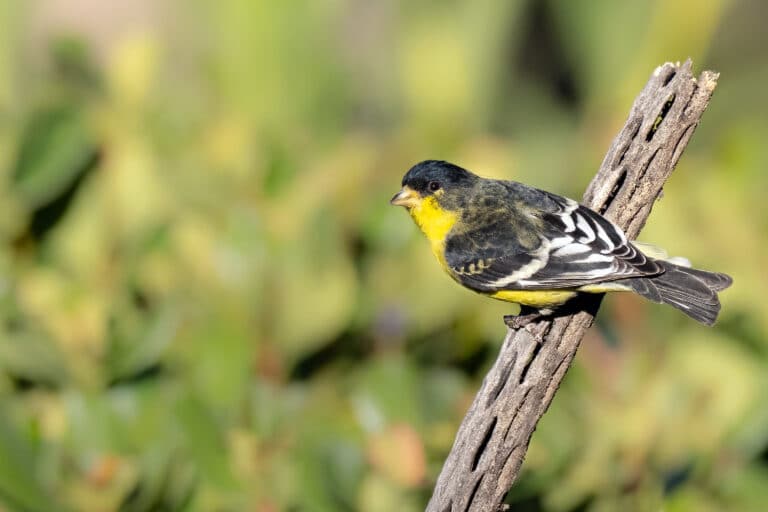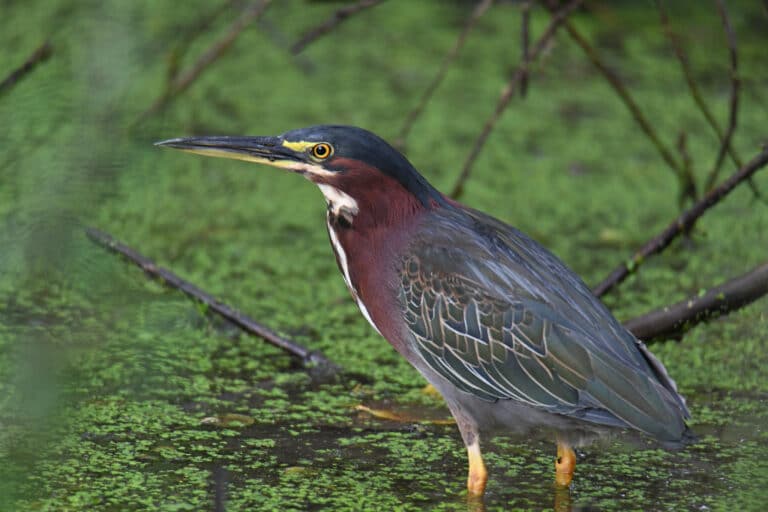Tucson area backyards and urban green spaces would be a lot less lively without these loud and active characters around. We’re lucky, Gila Woodpeckers are easily found here and throughout southern Arizona, Baja California, and western Mexico. They’re not just urban birds though—they prefer desert areas with saguaro cactus or mesquite trees, and also riparian areas with trees large enough for their cavity nests.
In Southeast Arizona, the cavities Gila Woodpeckers excavate in saguaros are invaluable nest sites for birds that can’t create their own holes. Elf, Western Screech and Ferruginous Pygmy-Owls, Ash-throated and Brown-crested Flycatchers, Cactus Wren, Lucy’s Warbler, Purple Martin, and American Kestrel have been known to use woodpecker holes. Interestingly, in an Arizona study, Gila Woodpeckers responded positively to the presence of native vegetation, but urbanized areas had higher numbers of birds than did areas with no houses. Possibly due to this increase in urban nest sites, European Starlings have emerged as a competitor for cavities and can easily take over active woodpecker holes.
The Gila Woodpecker is a handsome, medium-size bird with a clean beige body and striking black and white wings and tail—males have a bright red cap. They’re busy and boisterous birds, so look for them year-round and listen for their loud calls at home or the next time you’re out and about.




